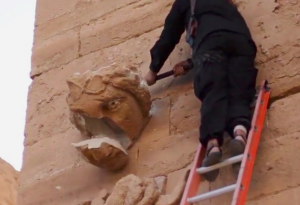“A people without the knowledge of their past history, origin and culture is like a tree without roots,” – Marcus Garvey. When we tell others about who we are, we tend to include where we came from, the dynamic of our family, and other things that have been important to us over our entire lifetime. We explain how our upbringing made us the people that we are today. Why is this so important to us? Why is this what makes us who we are? We do not tell people about our ambitions or dreams when asked about who we are. Instead, we talk about the past, because the past is what we identify with.
Everything we do is rooted in the past. Language, religion, and customs have all been around for thousands of years, yet continue to have a deep meaning to billions of people in the world today. Archeology is fundamental in the process of relating these important concepts of the past to the people of today. An example of this process is repatriation. It is well known that ancestors are very meaningful in Native American culture. Respecting the body of a tribe member after their death is essential in both the fortune of the body’s spirit as well as the tribe itself. When Europeans destroyed Native American burial sites for hundreds of years, it had a serious impact on the Native American culture. Having their ancestors’ bodies rot in national museums with numbers scratched across their foreheads was an absolute atrocity to the Native American culture. The Repatriation Act brought these essentials of the past back to the Native American culture and helped current Native Americans better connect with the past and better understand who they really are. All people need items from the past to help them understand who they are today.
Without these connections to the past, we have no form of identity. Without identity, we have no meaning and no strength. This can be related to the destruction of significant national landmarks throughout the Middle East and Africa by ISIS. Each time the terror group destroys a national landmark, they are also destroying the strength of the group of people they are battling against. If the native people to those lands do not have any connection to the land itself, their culture begins to deteriorate, therefore separating the people as a group. People need landmarks and artifacts to have a connection to the past to make them who they are today.
The past does not restrain us to certain boundaries, but it does help give us a sense of understanding who we are and why we are that way. Each person should be given the right to connect to the past in their own way.
References:
Renfrew, Colin, and Paul G. Bahn. Archaeology Essentials: Theories, Methods, Practice with 295 Illustrations. London: Thames & Hudson, 2015. Print.
http://news.nationalgeographic.com/2016/11/iraq-mosul-isis-nimrud-khorsabad-archaeology/
https://www.nps.gov/archeology/tools/laws/nagpra.htm
http://www.history.org/history/teaching/enewsletter/may03/archintro.cfm
Additional Reading:
http://www.mummytombs.com/world/nativeamerican.html
http://news.nationalgeographic.com/2016/11/iraq-mosul-isis-nimrud-khorsabad-archaeology/




